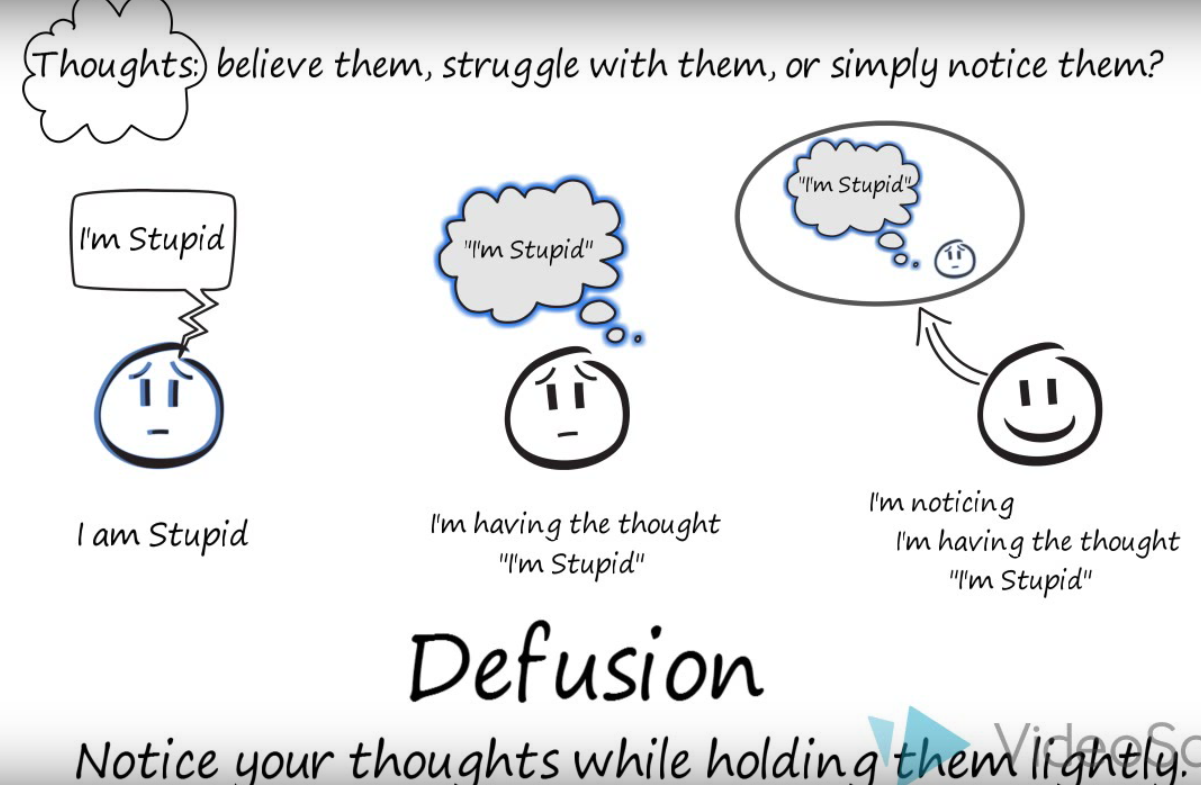Mastering Cognitive Defusion: Your ACT Worksheet Guide

Cognitive defusion is a core principle within Acceptance and Commitment Therapy (ACT), an evidence-based psychological intervention that uses acceptance and mindfulness strategies mixed in with commitment and behavior change strategies to help individuals create a more fulfilling life. The essence of cognitive defusion lies in learning to see thoughts for what they are – just thoughts – rather than being swept away by them or taken as literal truths.
Understanding Cognitive Defusion

Before diving into the worksheets, let’s clarify what cognitive defusion entails:
- Defusion vs. Fusion: Fusion is when we get entangled with our thoughts, taking them as absolute truths, while defusion allows us to step back and see thoughts as passing mental events.
- Impact: Cognitive fusion can lead to psychological inflexibility, where our thoughts dictate our actions and emotions, whereas defusion promotes flexibility and choice.
- Goal: To interact with our thoughts in a way that they do not have to control our behavior.

Your ACT Worksheet Guide

These worksheets are practical tools designed to help you practice cognitive defusion. They are not merely exercises but pathways to developing a healthier relationship with your thoughts.
1. The Leaves on a Stream Exercise

This worksheet helps you visualize your thoughts as leaves floating on a stream:
| Step | Instructions |
|---|---|
| 1. Find Your Stream | Imagine a peaceful stream flowing gently. |
| 2. Thoughts as Leaves | Whenever a thought comes to mind, visualize it as a leaf falling onto the stream. |
| 3. Observe and Let Go | Watch the leaf with curiosity as it floats away. Don’t judge or engage with the thoughts. |

🏆 Note: The goal is not to stop thoughts but to watch them come and go, allowing for natural flow.
2. I’m Having the Thought That…

By adding the phrase “I’m having the thought that…” before each thought, you’re reminding yourself that:
- Your thoughts are mental events, not realities.
- This linguistic technique helps to create distance from the thoughts.
✍️ Note: This exercise is about changing the perspective from which you view your thoughts, not about changing the thoughts themselves.
3. The Naming Exercise

Naming your thoughts can defuse their power:
- Anxiety Thought: “I’m having an anxiety thought.”
- Worry: “Here comes a worry.”
- Judgment: “That’s a judgmental thought.”
Labeling your thoughts creates a sense of separation and objectivity.
4. Thought Repetition

Saying a thought repeatedly out loud or in your mind can make it lose its hold:
- Example: “I’m such a failure. I’m such a failure. I’m such a failure.”
The repetition reduces the emotional charge, helping you see it as just a string of words.
5. The Observing Self Technique

This practice involves:
- Seeing yourself as the observer of your thoughts, rather than being the thoughts themselves.
- Imagine a part of you that’s just watching your thoughts without participating in them.
This exercise fosters the idea that you are more than your thoughts.
By engaging with these cognitive defusion worksheets, you are taking steps towards greater psychological flexibility. You'll learn to view thoughts with a sense of detachment, allowing them to exist without exerting undue influence over your behavior or emotional well-being. Over time, this can lead to reduced anxiety, better decision making, and a more centered existence.
Frequently Asked Questions

How often should I practice cognitive defusion techniques?

+
It’s beneficial to practice these techniques daily, especially when starting out, to build and reinforce the habit of observing thoughts rather than being consumed by them.
Can cognitive defusion be used for specific thoughts like negative self-talk?

+
Absolutely. Cognitive defusion is particularly effective for tackling persistent or distressing thoughts like negative self-talk, allowing you to interact with these thoughts in a healthier way.
What if cognitive defusion doesn’t work for me?

+
Patience and consistent practice are key. If you find it challenging, consider seeking guidance from a therapist trained in ACT, who can provide personalized support.
How does cognitive defusion differ from thought suppression?

+
Thought suppression involves actively trying to push thoughts away, which often makes them return with greater force. Cognitive defusion allows thoughts to be present without engaging with them, promoting flexibility.